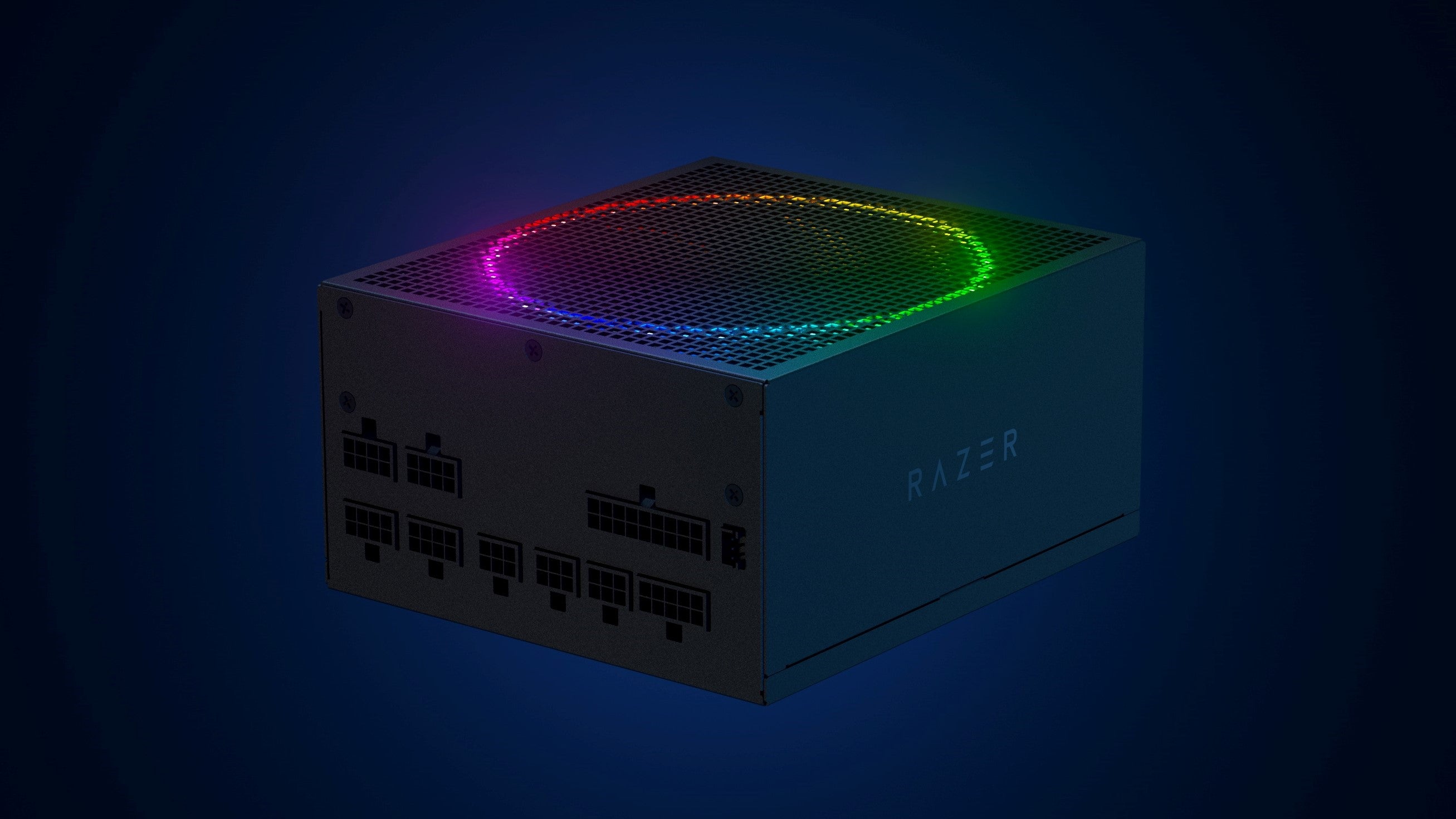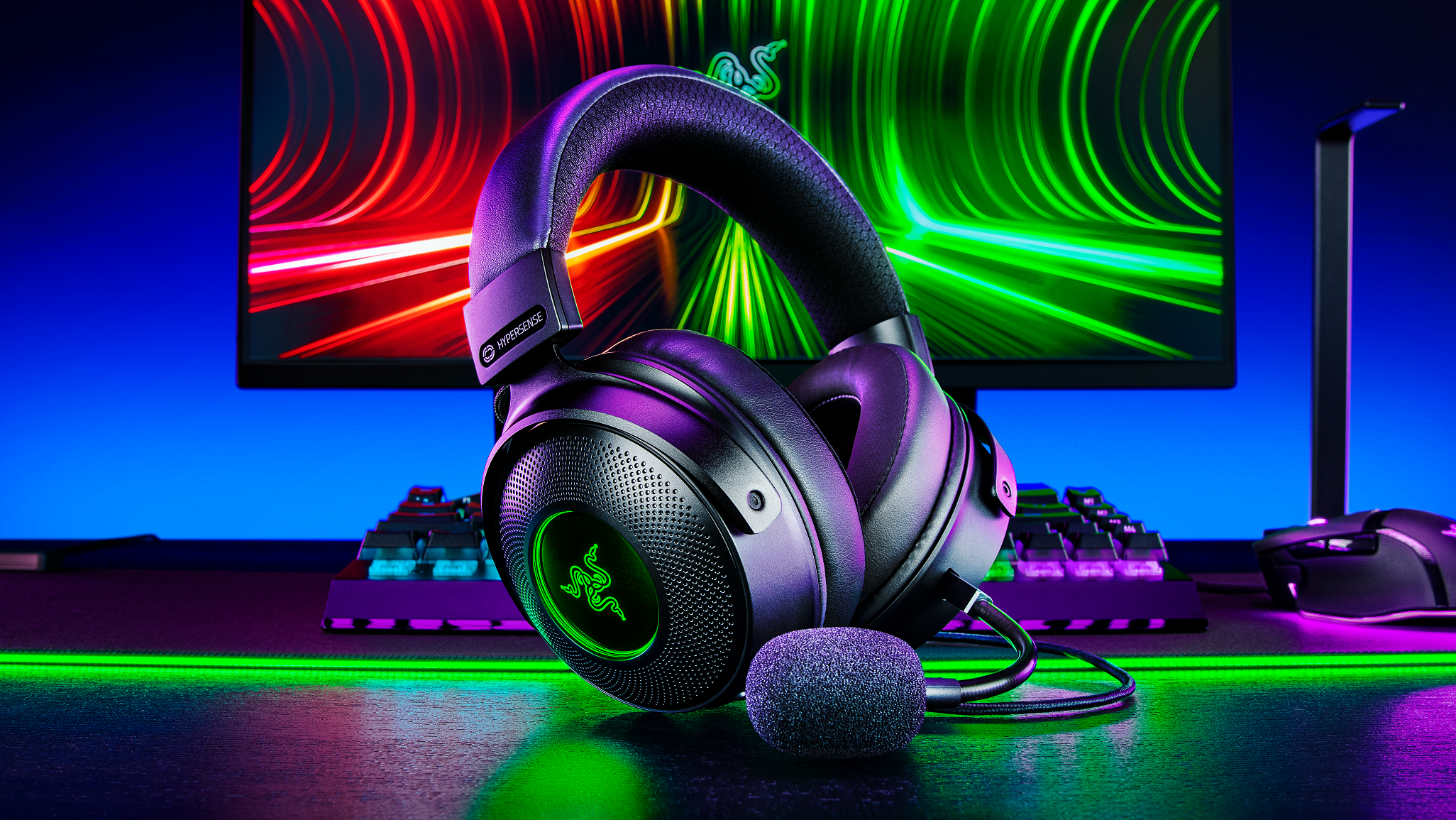Razer have made some of the best gaming mice and best gaming keyboards, so it will be interesting to see how its first major components (if we’re not counting the Tomahawk chassis series or the Chroma RGB controller) turn out. RazerCon also served as the launchpad for a host of other snake-embossed kit, including a set of Kraken V3 headsets with majorly upgraded HyperSense haptic feedback. Personally I’m most intrigued by the Hanbo CPU coolers, which come in 240mm and 360mm radiator versions with addressable RGB throughout. There’s no pricing for these ahead of the full release sometime in late November, but we know they were born of a partnership with cooling specialists Asetek. Reassurance, perhaps, for anyone worried about putting a first-gen product in their PC that happens to be full of liquid. On that note, the Hanbo coolers promise an “optimized pump design” for “silent operation.” The RGB-laden Katana power supplies aren’t priced up yet either, though they’re evidently targeting higher-end rigs with power-hungry CPUs and the best graphics cards. The two wattage options are 750W - enough for even the Nvidia GeForce RTX 3090 - and a monster 1,600 watts. They’re both Platinum-rated for efficiency, too. Expect to see them on sale from early 2022. The Kunai fans look like pretty conventional aRGB case fans, coming in 120mm and 140mm varieties, though are naturally designed to pair well with the PWN Fan Controller. This will let you customize fan speeds, as well as the onboard lighting, through Razer’s Synapse software. Both are available now; the controller will set you back £50 / $50 and the fans at least £45 / $45, so they’re not exactly entry-level. Back on Razer’s home turf of peripherals, the big news was the reveal of the Kraken V3 headset family. Comprised of the Kraken V3 (wired, £100 / $100), Kraken V3 Hypersense (wired, £130 / $130) and Kraken V3 Pro (wireless, £200 / $200), these are all chunky gaming headsets with big 50mm drivers, memory foam ear cushions and THX surround sound support. The Kraken V3 Pro and Kraken V3 HyperSense also include an upgraded form of Razer’s haptic feedback tech, also named HyperSense, which first appeared on the Razer Nari Ultimate headset a couple of years ago. Razer has tweaked the HyperSense drivers in these new Kraken models to produce a kind of spatial/stereo effect, so vibrations should reflect the origin points of in-game sounds. The vibrations can also cover a much wider frequency range, for a greater range of intensity to the face-buzzing effect, though it sounds like the biggest upgrade comes to how haptics are processed. Previously, HyperSense would need manual integration with certain games for anything more than the most basic vibrations, but now the haptics use real-time processing to deliver the full effect in games without without prior implementation. You’ll be able to adjust the haptic feedback intensity from the Kraken headsets’ onboard controls, too. RazerCon also saw the launch of some new Razer gaming chairs, the Enki and Enki X: both comfort-focused yet lower-priced alternatives to the £499 / $499 Razer Iskur. The Razer Zephyr face mask (formerly known as Project Hazel), with built-in fans and a somewhat disconcerting mouth window, also got a formal launch. I won’t deny being most intrigued by the new AIO coolers and the more rumbly Kraken V3 variants, though – hopefully they’ll continue a hot streak most recently maintained by the very likeable Razer Basilisk V3 and Huntsman V2.

